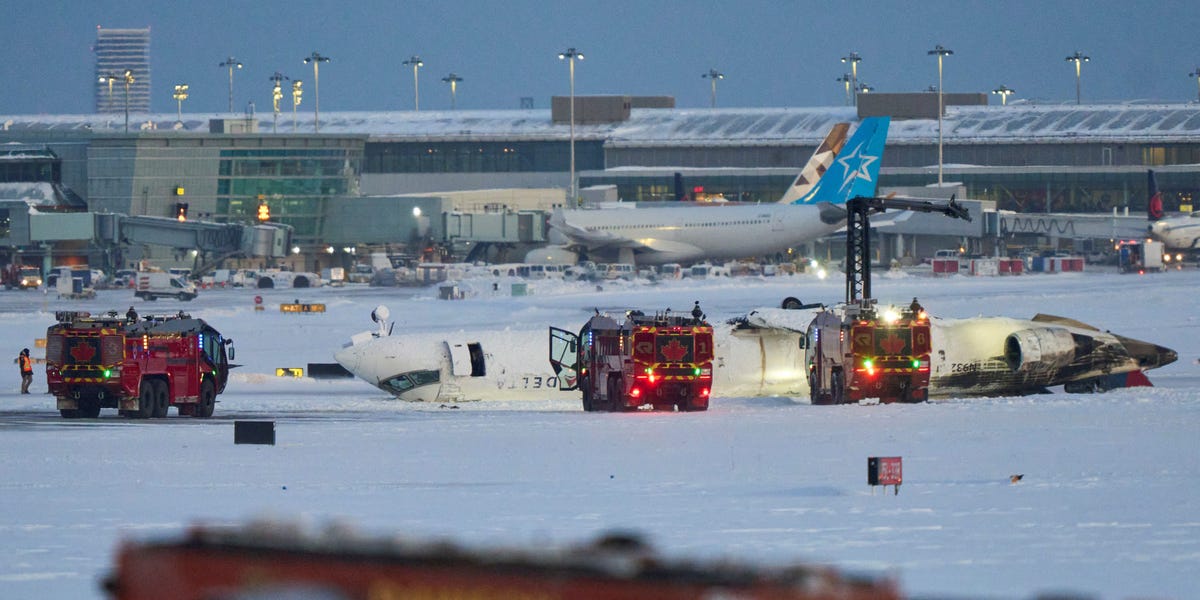A Delta Airlines aircraft crash-landed and overturned in Toronto on Monday. Pilots from the airline indicated that strong crosswinds or debris on the runway might have contributed to a failure of the landing gear. Fortunately, all 80 individuals on board, including passengers and crew, escaped without serious injuries, largely due to the aircraft’s design and established safety measures.
Three experienced pilots believe that a combination of malfunctioning landing gear, winter weather conditions, or runway debris may have led to the incident where a Delta Air Lines plane flipped over. Mark Stephens, a former Delta captain with 30 years of experience, shared with Business Insider that footage from the event appeared to show the right main landing gear collapsing moments after touchdown. He noted that it appeared the right wing subsequently hit the ground, detached from the aircraft, and ignited a fire. The plane then rolled over and came to a halt on its back.
“Once the forces caused the gear to fail, there was no stopping it,” Stephens stated. “The aircraft likely did not catch fire completely because the wing detaching left fuel behind, which reduced the likelihood of a significant spark. Additionally, the presence of snow and ice may have helped mitigate the blaze.”
Two other current airline pilots, who requested anonymity due to the ongoing investigation and their companies’ media policies, concurred that the video footage seems to confirm that the right landing gear failed upon landing. As of now, investigators have not revealed any specific information regarding the potential causes of the crash.
The landing gear may have been compromised due to an excessive force or foreign debris. The strong crosswind and the possibility of wind shear—defined as a sudden shift in wind direction that can impact an aircraft’s altitude—could have exerted significant lateral pressure on the right gear at the moment of landing. At the time of the incident, the airport was experiencing gusts of wind at around 33 knots. Wind shear remains a known risk during both takeoff and landing, having been a factor in previous aviation disasters.



